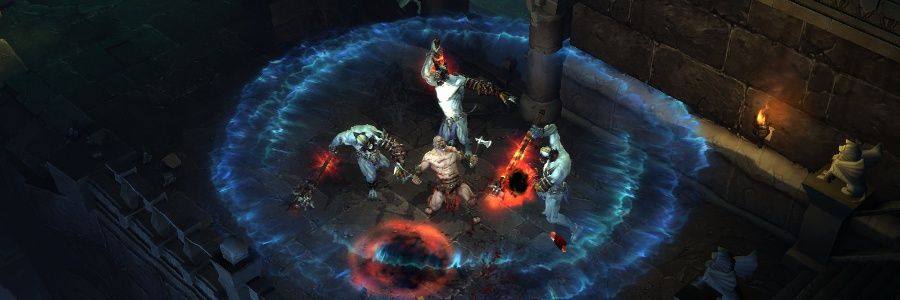 After over two months of enthralling comics blogging, no doubt most of you by this point are wondering to yourself, "why doesn't this man have a book deal? These opinions and facts about comics should be collected immediately if for no other reason than to ensure that the Library of Congress gets a hard copy of these important insights, to protect them for posterity and the future of our great nation." Good point. But rest at ease, folks: that book already exists.
After over two months of enthralling comics blogging, no doubt most of you by this point are wondering to yourself, "why doesn't this man have a book deal? These opinions and facts about comics should be collected immediately if for no other reason than to ensure that the Library of Congress gets a hard copy of these important insights, to protect them for posterity and the future of our great nation." Good point. But rest at ease, folks: that book already exists.Yes, for those of you who may not be aware, I have had the honor and pleasure to contribute to not one but two books about my favorite subject, the Avengers. You may have noticed a brief shout out about this back when I interviewed Van Plexico, but if you missed it, essays by myself appear in both Assembled! and its mighty sequel, Assembled! 2.
 Of course, writing whole books about the Avengers, while certainly a worthy endeavor, is a bit more work than I had time for myself, so I should give credit to the pack of helper monkeys -- er, fine contributors -- from Van's Avengers Assemble! website that also pitched in to fill in the gaps that I might have overlooked. And of course, Van himself acted as editor and publisher for the series, came up with the idea and organized the project, so I suppose he should be mentioned as well.
Of course, writing whole books about the Avengers, while certainly a worthy endeavor, is a bit more work than I had time for myself, so I should give credit to the pack of helper monkeys -- er, fine contributors -- from Van's Avengers Assemble! website that also pitched in to fill in the gaps that I might have overlooked. And of course, Van himself acted as editor and publisher for the series, came up with the idea and organized the project, so I suppose he should be mentioned as well. So what is in store for you if you decide to pay the tiny, almost symbolic, fee to purchase the book? Well, in the first volume, I and my cohorts discuss each era in Avengers history, broken down by writer, with some additional odds and ends thrown in for good measure. I had the pleasure of contributing the chapter about Avengers legend and former Marvel editor-in-chief Roy Thomas, who wrote the series for 71 issues, from #35-105; and within that long run, I also broke it down to sub-runs that each deserved its own look. But rather than just talk about it, I'll show you, in a series of small excerpts from my chapter:
From The Early Issues: #36-50
"Avengers #44 effectively ends the contribution of the Black Widow to the team. After Avengers Special #1, the team returns in #45 to a city-wide holiday and they at that time induct Hercules as an official member of the team. They also state that they were going to induct Black Widow at the same time, but she has decided to retire. It is interesting to speculate how sales and reader reaction may have affected this decision. From the moment Thomas took over the series, Black Widow became a vital character, appearing on many covers and driving the action; it seems strange for Thomas to so abruptly relegate her to the minor supporting role of Hawkeye's girlfriend. As the later transformation of Hawkeye to Goliath showed, the stories were often dictated by what management believed would sell; it is possible that Black Widow and Hercules were both added in an attempt to boost sales and it is possible that they were dropped for failing to do so, or because of perceived negative reaction."
From The Classic Issues: #51-71
"Over the course of less than two years, between Avengers #51 and #71, Roy Thomas created the Grim Reaper, Ultron, the Vision, Yellowjacket, and the Grand-Master, added the Black Panther and the Black Knight to the team, married Hank and Jan and returned the Masters of Evil, Kang the Conqueror and Wonder Man to prominence. He did so at a time when the artwork, first by John Buscema and later by Gene Colon and Barry Windsor-Smith, was reaching exciting new heights for the series and the company. The combination of Thomas's maturation as a writer and the new expressiveness of Marvel as a whole enabled an unparalleled streak of classic issues that set the stage for nearly all future stories that would come to define what the Avengers meant as a series."
From The Kree/Skrull War and Beyond: #89-105
"Over the course of this story, Thomas weaves strands of stories that previously had been unrelated - the Skrulls, the Kree, the Inhumans - forming a mythology for the cosmic storylines that would follow in the Marvel universe. He also continues with topical relevance, through the use of government strong-arms who are riling up the citizens, only to be revealed as Skrull instigators. Further, he advances the sub-plots of his characters, most notably the formation of the romance between the Vision and the Scarlet Witch. This had previously only been hinted at in the vaguest fashion, but it becomes an important story point in issue #96. And lastly, he again shows his grasp of Marvel continuity through his usage of Golden Age characters and the importance of Rick Jones to this story and to Avengers history."
 That's just a tease of what you can find out about Roy Thomas and the Avengers in my chapter of Assembled! But I would be remiss if I ended this without also mentioning the sequel, Assembled 2!, which only suffers from one drawback -- a lack of myself. While there is less of me to go around, however, the other authors do a fine job. And I still manage to get in a few bits and pieces here and there, mostly small anecdotes, such as this snippet about the later parts of Thor vol. 1:
That's just a tease of what you can find out about Roy Thomas and the Avengers in my chapter of Assembled! But I would be remiss if I ended this without also mentioning the sequel, Assembled 2!, which only suffers from one drawback -- a lack of myself. While there is less of me to go around, however, the other authors do a fine job. And I still manage to get in a few bits and pieces here and there, mostly small anecdotes, such as this snippet about the later parts of Thor vol. 1:"The Jim Starlin issues of Thor just after Tom DeFalco left the book aren't particularly great, but they have their moments. My favorite is this bit of dialogue after Thor meets a mystery woman:
Woman: "I have many names, son of Asgard. You would probably best deem me The Goddess. Open yourself up, Thor, and feel the grandeur and the potential for universal Nirvana within me."
Thor: "Um...what?"
Well said, Odinson. There's the decisive Thunder God we know so well."
Delightful, you'll agree.
So how can you get these delightful books, which would be a perfect Christmas of Hanukkah gift for pretty much anyone on Earth, including yourself? Well, finer, discriminating book and comic book stores will stock it, of course, but you also click here to buy the books on Amazon.com. Because what library would be complete without the collected works of me, Scott Harris?
And everyone else who worked on them, of course.




















































